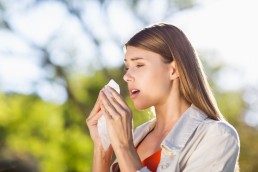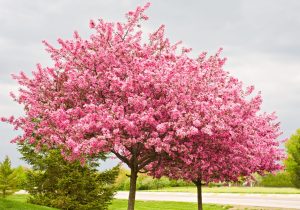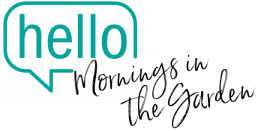A Deep Dive into Summertime Allergies
As the warmth of summer graces us with its presence, many of us are eager to embrace outdoor activities and soak up the sun. However, along with the barbecues, beach days, and sunny strolls, comes an uninvited guest: allergies. For many people, summer is synonymous with sniffling, sneezing, itchy eyes, and other symptoms that signal the onset of seasonal allergies. Let’s delve into what exactly causes summertime allergies, how they impact us, and what we can do to manage them better.
The Cause: Summer Allergens
Seasonal allergies, also known as hay fever or allergic rhinitis, are triggered by allergens—substances that the immune system mistakenly identifies as harmful. When the body encounters these allergens, it responds by producing a type of antibody called Immunoglobulin E (IgE), leading to an allergic reaction.
During the summer months, the primary culprits are pollens from grasses, weeds, and trees. While spring is most commonly associated with tree pollen allergies, summertime often sees a rise in grass pollens (such as Timothy grass, Kentucky bluegrass, and ryegrass) and weed pollens (like ragweed, sagebrush, and pigweed). Mold spores, which thrive in warm, humid environments, also become more prevalent during summer, contributing to allergic symptoms.
The Impact: Symptoms of Summertime Allergies
The allergic reaction sparked by these allergens can result in a variety of allergy symptoms, many of which can be quite discomforting. These symptoms typically include:
- Sneezing
- Runny or congested nose
- Itchy, watery, or red eyes
- Coughing
- Itchy throat or ears
- Fatigue
These symptoms can severely affect an individual’s quality of life, leading to disturbed sleep, irritability, and an inability to fully enjoy outdoor activities during the summer season.

Managing Summertime Allergies
Various strategies can help manage the symptoms of seasonal allergies and make your summer a lot more enjoyable.
1. Awareness and Avoidance
Stay updated on local pollen forecasts available online such as the United Allergy Service Pollen Forecast or through mobile apps such as myAllergyPal®, and try to limit your outdoor activities on high pollen count days. Additionally, during these peak periods, keep your windows closed and use air conditioning to keep allergens at bay.
2. Allergy Medication
Over-the-counter antihistamines can be effective for relieving allergy symptoms like sneezing, itching, runny nose, and watery eyes. Decongestants may also help to relieve a stuffy nose. For those with severe symptoms, a provider may prescribe stronger medications or recommend allergy shots (immunotherapy).
3. Good Hygiene Practices
After spending time outdoors, be sure to shower and change into fresh clothes to remove any pollen that may have settled on your skin and clothing. It’s also beneficial to wash your hands often and avoid touching your face, especially your eyes, to prevent direct introduction of allergens.
4. Home Environment Care
Use high-efficiency particulate air (HEPA) filters in your home to trap pollen and other allergens. Regular cleaning and vacuuming also help to keep your indoor environment allergen-free.
The Solution: Lasting Allergy Relief
Despite best efforts to manage allergy symptoms, over-the-counter medications and preventative measures might not be enough for some individuals. In such cases, it’s crucial to take the next step—getting tested for allergies. By identifying specific triggers, you can not only avoid those allergens but also receive targeted treatment for more effective symptom relief.
Through your provider at an allergy center near you, United Allergy Services offers comprehensive allergy testing that can pinpoint the exact allergens causing your discomfort. This personalized approach allows for a more accurate diagnosis and effective treatment plan.
For some, the path to relief could lie in immunotherapy, a treatment approach that helps the body build tolerance to allergens. United Allergy Services offers allergy shots (subcutaneous immunotherapy) and allergy drops (sublingual immunotherapy) tailored to your specific allergen sensitivities. Over time, immunotherapy can help to reduce or even eliminate your allergic responses, enabling you to fully enjoy summer.
In conclusion, while summertime allergies can put a damper on this vibrant season, there are many avenues to manage and overcome them, including avoidance, medication, and medical treatments like immunotherapy. Don’t let allergies hold you back—explore options with your provider at a local allergy center to find the best treatment path for you.
Botanical Sexism: Does it impact allergy sufferers?
What is Botanical Sexism? Tom Ogren, horticulturist and allergy researcher, has done extensive research on ways to reduce pollen counts and pollen potency. His theory centers around the unbalanced planting of male vs female plants. This unbalance can impact pollen counts and the resulting escalation of pollen allergies. He wrote and published an article in Scientific American, coining “botanical sexism” to explain his theory. Ogren believes a better mix or “gender balance” of male and female trees, especially in urban settings, would lower pollen counts.
Ogren’s article focuses on the foundation set in the 1949 USDA Yearbook of Agriculture which reads, “When used for street plantings, only male trees should be selected, to avoid the nuisance from the cottony seed.” This idea comes from the fact that male trees produce pollen, and female trees receive that pollen and produce fruit and seeds. It was recommended to plants primarily or all male tress to avoid messy sidewalks and parks from the flowering female trees that would drop their seeds and fruits.
Tree System Selection
Is botanical sexism a natural selection? Trees have four primary sexual systems: cosexual, monoecious, dioecious and polygamous. A tree that produces single flowers with combined fully functional male and female parts

is called cosexual. Monoecious trees similarly have both male and female parts within the same tree, however they separate the male and female parts into different flowers or cones on the same tree. Dioecious trees separate male and female parts on completely different trees where one tree is strictly female and one strictly male. These trees were Ogren’s primary focus. And for completeness we will define polygamous trees as the most complex and as cosexual, with male and female flowers on the same tree but also with separate male and female parts in different combinations on completely different trees.
Ogren’s work focuses on dioecious males planted independently of dioecious females. This is often the case in urban areas due to the cleanliness concern described above. When this occurs however, their pollen is unchecked by any capture by female flowers and causing copious amount of pollen to be distributed in the air to cause coughing, sneezing, and respiratory issues. Tree pollen is one of the greatest offenders of not only allergic rhinitis, but also allergic conjunctivitis and allergic asthma as well.
Pollen Count Impact
Botanical sexism referenced higher pollen counts due to failed tree “gender balance”, and is further exacerbated by higher pollen potency. Studies have shown that air pollution (which tends to be higher in urban settings) attaches to pollen grains and causes the powdery substance to shatter into still tinier pieces. “When that happens the inside of the pollen grain is exposed and that’s 10 times more allergenic than the outside,” explained Ogren. This is again exacerbated by increasing CO2 levels which causes plants to bloom at a faster rate and at a higher content which means even higher pollen counts where predominantly male trees reside.
Purpose of Defining Botanical Sexism
Prime allergy season is usually defined as mid-March to early June in most of the United States. Frequency of allergic rhinitis (AR) diagnosis increase greatly during this season. AR affects more than 400 million people worldwide, and is expected to rise by another 100 million by 2025. Ogren collected extensive data, and by 2000 was able to develop a scale called OPALS (Ogren Plant Allergy Scale) that ranks more than 3,000 plants from 1 to 10 based on how allergenic they are. This was the first numerical ranking system in existence for plant allergies and is used to develop allergy rankings in large US cities.
Ogren’s work is meant to encourage city planners, plant distributors, and homeowners to think carefully about their plant choices. He feels we all are all responsible for the rising numbers of allergy sufferers, and we, by making the correct plant choices, can at least reduce the amount of allergenic pollen in the air. Examples of plants that are allergy-friendly include pansies, impatiens and snapdragons.
Amanda Hofmann, MPAS, PA-C, is a graduate of Duquesne University, in Pittsburgh, PA. After spending 8 years in clinical practice, she joined United Allergy Services where she is currently the Vice President of Clinical. Amanda is also the past president of the Association of PAs in Allergy, Asthma, and Immunology.
United Allergy Services is also on Facebook, LinkedIn, or Twitter. See other interesting and related articles on the UAS Blog.
Tree Pollen Allergy
March is finally here, and that means so is Spring. Longer days, morning walks in the garden, rain showers and rainbows are excitedly on the horizon. However, if you have spring allergies you may be less excited about the season. Spring is typically defined as starting with the vernal equinox, and this year that is March 20. Of course, our allergies don't need a calendar to tell us that tree pollen, the main culprit of the sniffles and sneezes during spring allergy season, is already here!
Trees typically start producing pollen as early as January in the Southern areas of the U.S. The Northern and Central areas follow with pollen production sometime in February. One outlier, the Ashe Juniper Tree (commonly called Mountain Cedar) wreaks havoc in Oklahoma and Texas as early as December. Many trees will continue to produce pollen through June. Also, the milder the winter season, the earlier the trees begin producing pollen. Similarly, late winter or early spring snowfall leads to more pollen. The copious amounts of moisture produced when the snow melts allows a greater volume of pollen production.
Understanding Pollen
Pollen is a powdery substance made up of small spores that come from male trees and flowers. There are two primary types of pollen. The first pollen type, “Sticky Pollen” is produced by plants and trees that have bright and attractive flowers. This kind of pollen sticks to bees and is transported during flight, fertilizing other plants. These bright flowers are commonly thought to be spring allergy offenders. However, sticky pollen doesn't release much pollen into the air, so they are likely not driving most allergy symptoms.
The other type of pollen is “Wind-Blown Pollen”. This pollen comes from larger trees like pine and oak. The pollen is released in large quantities into the air, fertilizing other trees of the same species. The pollen that causes stereotypical allergy symptoms like nasal congestion, runny nose, and itchy eyes is usually the wind-blown pollen. This pollen is very small and light, and is easily spread by the wind for miles and miles.
Allergy sufferers can benefit from checking local pollen counts to determine the density of pollen in the air on any given day. Pollen counts are determined by collecting pollen on special rods. It is then counted under a microscope and calculated in grains per cubic meter of air. Pollen counts tend to be highest early in the day, or when wind picks up just before a large rainstorm. If you like dancing in the rain, however, you are in luck. During a rainstorm and immediately following, pollen becomes still and dormant due to the rain making it damp and heavy. As the air becomes warm and dry following the storm, the pollen count will become potent again.
Managing Tree Pollen Allergies
For tree pollen allergy sufferers, it is recommended to avoid densely wooded areas, especially in early spring when pollen is the most abundant. If possible, avoid planting trees around the house that can cause allergy symptoms. Pass on major tree offenders like oak, birch, maple, cedar, juniper, and eucalyptus (unless you can guarantee they are female trees). Instead, look for friendlier species such as dogwood, pear, plum, redbud, or crape myrtle.
Pollen counts are never zero, and allergy sufferers will not truly be able to avoid tree pollen in the spring. However, some practices may help alleviate the severity of symptoms. Try utilizing the air conditioner and keeping windows and doors closed at home and in the car. Also, using the dryer instead of hang drying clothing will help decrease pollen exposures. One benefit of COVID-19 is that wearing some masks will help to minimize the amount of pollen that reaches the nasal passages, especially when worn in outdoor settings. Tree pollen allergy suffers should also make a habit of changing their clothes after coming in from being outdoors, and bathing prior to getting into bed/laying on upholstered furniture.
If you know someone that has difficulty with morning walks in the garden and they are unsure whether tree pollen is a trigger for their spring nasal congestion, runny nose, post nasal drip, sneezing, and itchy watery eyes, you can suggest they see their provider for an allergy test. It may provide the clarity they are looking for!
______________________________________________________________________________________________________________________
Amanda Hofmann, MPAS, PA-C, is a graduate of Duquesne University, in Pittsburgh, PA, and spent 8 years in clinical practice before joining United Allergy Services. Amanda is a past president of the Association of PAs in Allergy, Asthma, and Immunology and currently serves as Vice President of Clinical at UAS.
For more interesting insight from United Allergy Services, visit us on Facebook, LinkedIn, or Twitter.



